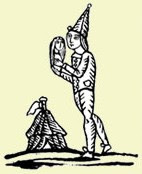
It is time to fill you in on 2 more chapters from this really interesting literary theory book that I am making notes on as I read it throughout the year.
Last month saw chapters 4 and 5 on Thresholds and Interiors. This month sees the last chapter of Part One: Economies and Styles, and the first chapter in Part 2: Nation and Society.
Chapter 6 - The Relevance of Ulysses
If ever a book was thought to be the most prominent of the Modernist era, it is James Joyces' Ulysses, 'a novel which turned the whole genre inside out', p95. Difficult to market because of its 'peculiarity' it was to use this as part of its marketing ploy. It was rejected by mainstream publishers, but played upon its own 'uniqueness', with Joyce even producing a readers guide to help with its level of difficulty. All of this singled out readers who would invest time and energy in their reading, imbuing the book with a certain kudos and its readership as a literary elite, at least in the world of contemporary novels. 'Ulysses was defined by its difficulty' p97, even its title inferred a knowledge of Homer, to be going on with.
The first 10 episodes of the book are written in what is known as 'initial style', combining dialogue, first-person present-tense monologue, and third-person past-tense monologue. All pretty normative. This style evolves into a periodic structure, with the use of adverbials, descriptive words or passages which mean nothing as they are read and demand patience from the reader to be remembered for a later part of the book. These adverbials support inferences, and it is with this knowledge lies the art of decoding the narrative. Relevance of narrative is often layered and not laid bare. Joyce deliberately complicates his linguistic structure to avoid meaning.
This style of writing and form of communication exemplifies Modernist writing. Readers had to abandon all previous codes of reading and understanding novels. In later episodes technique overrides content and the story loses emphasis to expression. Huge amounts of effort in the reader produce small amounts of information. As the book progresses, the book becomes more difficult to process, with relevance seeming to be abandoned. As the reader strives to make connections, it can appear as if 'the joke is on us' p107.
PART II - Nation and Society
Chapter 7 - Degeneration
During the second half of the 19th century people became obsessed with the degeneration of the race. The theory of degeneration emerged from the natural and medical sciences. The 'decline of the white races', p112, included documentation of regression, an 'organic process' that was hereditary. This social theory was seen as the cause of crime, poverty and disease. Connecting to the 'age-old anxiety about the end of the world', p112, it reinforced theories regarding decadent lifestyles and the arts in general. This theory, as the new century got under way, became a habit of mind and was referred to often. Any social problem could be connected to it.
Naturalist fiction encorporated plots of decline, physical and moral exhaustion. Emile Zola's early novels, following strands of the same family from novel to novel, illustrated downward spirals through the generations of alcoholism, disease, poverty or madness.
Zola was not hugely popular in Britain, but he was notorious and Henry James noted a pessimism had descended upon the British writing of the time. Zola's grimy plots and downwardly mobile characters provided a stage for social comment. This led the way for 2 new genres, slum fiction and the New Woman novel.
Pioneered in the 1880's by Gissing and Besant, slum fiction took the French pessimism and incorporated women protagonists who, following failed relationships, plummed the depths of existence, with violence, abandonment, prostitution or death. These plots differed in blaming external circumstances for their downfall, rather than a hereditary malfunction. The women start off spirited, but have the life beaten out of them by circumstance.
Deformed children, illustrating the degeneration of bloodlines, was popular in naturalist fiction, as was hysteria in women. Professor Moriarty of the Sherlock Holmes stories, and Count Dracula were all examples of the degeneracy that people feared and these characters were described as such. 'Parasites, outcasts and madmen' p118.
Another off shoot of these theories was the continuation of race, in order to halt degeneration, through preservation of bloodlines. Women should mate with racially sound men, and this came into the fiction of the time. Examples can be found in the novels of D H Lawrence where the characters discuss racial purity, as well as E M Forster.
Contemporary works that illustrate the above points include...
Ulysses by James Joyce
The Time Machine by H G Wells
Germinal, L'Assomoir and La Terre by Emile Zola
A Mummer's Wife by George Moore
The Unclassed by George Gissing
Women in Love by D H Lawrence
The Picture of Dorian Gray by Oscar Wilde
Tess of the d'Urbervilles by Thomas Hardy
Look out for the next two chapters which will be covered some time in June.
























No comments:
Post a Comment